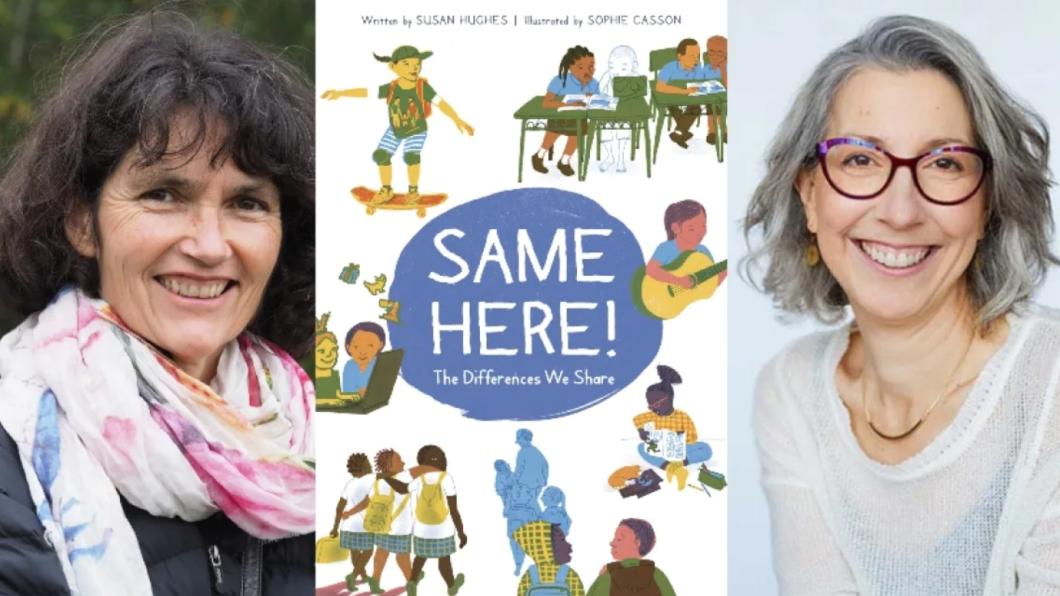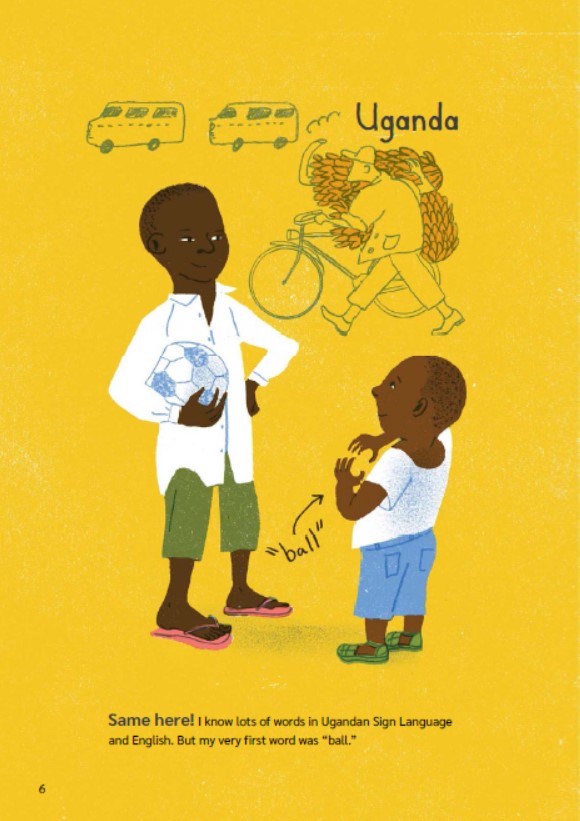
A book shows what kids around the world share in common
Photo by CBC Books
By Louise Kinross
In Same Here!, children from over 50 countries talk about what unites them and what makes them unique.
The vibrant new picture book, written by Toronto author Susan Hughes, shows how children all have the same basic needs—to communicate; to feel loved and have a home; to eat, learn, play and dream; and to help their families and communities.
In stunning illustrations by Montreal artist Sophie Casson, kids from around the world chat, back and forth, about how they get those needs met in a multitude of ways.
Each chapter begins with a question. "What were your first words?" is one. A girl in the United States says hers were strawberry, yes, and hi—in Navajo, Spanish and English. A boy in Uganda signs the word 'ball' in Ugandan Sign Language. After hearing from kids in Colombia, Egypt and Malaysia, the chapter ends with a question for the reader: "What was your first word?"
Children in Kenya, Canada and Mozambique talk about their family makeups: one family includes a grandpa, parents, children, and a child whose parents died; another has two dads; and a third is a huge extended family. In Thailand, a boy lives on a house on stilts by the water. In Mexico, siblings look out at the city from their high-rise. In Tanzania, a girl's house is one big room, powered with a new solar panel.
"It really is a good example of intersectionality," says Susan, who has written over 30 children's books. "We wanted to show a slice of life. For example, you see a child talking about a chore they do for their family. In the pictures you also see their relationship with a sibling, or you get a sense of their economic situation, their age, their ethnicity or their ability or disability. Are they at school or at home, in an apartment or in the countryside? I hope kids are intrigued enough to look deeper and parse out some of the influences and ask why a child would feel the way they do."
Disability is presented simply as a part of diversity, with no big descriptions or judgments. For example, a boy in Ukraine, who just moved with his family to an apartment, uses the elevator because he walks with canes. In New Zealand, we learn about twin brothers and their chores. We also hear about their differences. One loves to draw and walk the dog, while the other plays cricket. One has Down syndrome, and the other doesn't. "It's the idea of equity," Susan says. "Here is everybody. Turn the page and you'll see someone different."
Susan says she's never faced pushback from a publisher about including disabled characters in her books. "Disability has been vastly underrepresented. These are people in our community, they're our neighbours. The real question is 'Why shouldn't they be in there?'"
The book is targeted to children aged eight to 12, but will interest younger children and even adults. "I'm hoping children answer the questions in the book and feel like they're part of the conversation," Susan says.
A tremendous amount of research and fact-checking went into ensuring the representation of children from around the world was authentic.
Susan has a connection to Holland Bloorview. Years ago her children went to Spiral Garden, an inclusive arts camp that runs in the ravine behind our hospital. "It had a pretty profound effect on them and me," she says. "I wish there was one for adults. The puppets and the garden and the sand and water, and being able to sit in the mud all day. Costumes. The atmosphere and the mood was so liberating."
Same Here! is published by Owlkids Books. Check out their great discussion guide for parents or teachers. The book, which launches on April 15, belongs on every kid's book shelf.
Like this story? Sign up for our monthly BLOOM e-letter. You'll get family stories and expert advice on raising children with disabilities; interviews with activists, clinicians and researchers; and disability news: https://bit.ly/3IIK5Qo.
